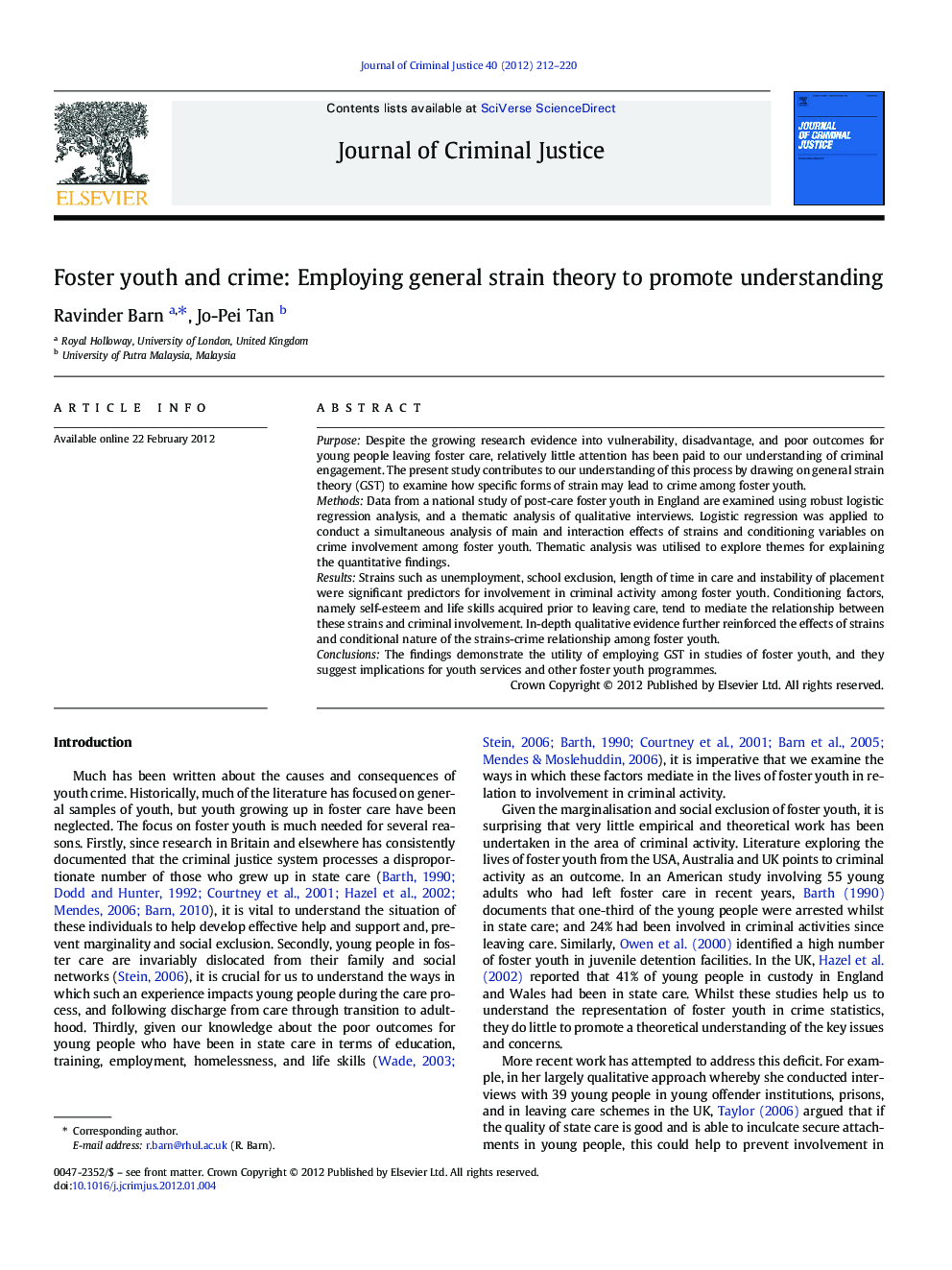| کد مقاله | کد نشریه | سال انتشار | مقاله انگلیسی | نسخه تمام متن |
|---|---|---|---|---|
| 882869 | 912031 | 2012 | 9 صفحه PDF | دانلود رایگان |

PurposeDespite the growing research evidence into vulnerability, disadvantage, and poor outcomes for young people leaving foster care, relatively little attention has been paid to our understanding of criminal engagement. The present study contributes to our understanding of this process by drawing on general strain theory (GST) to examine how specific forms of strain may lead to crime among foster youth.MethodsData from a national study of post-care foster youth in England are examined using robust logistic regression analysis, and a thematic analysis of qualitative interviews. Logistic regression was applied to conduct a simultaneous analysis of main and interaction effects of strains and conditioning variables on crime involvement among foster youth. Thematic analysis was utilised to explore themes for explaining the quantitative findings.ResultsStrains such as unemployment, school exclusion, length of time in care and instability of placement were significant predictors for involvement in criminal activity among foster youth. Conditioning factors, namely self-esteem and life skills acquired prior to leaving care, tend to mediate the relationship between these strains and criminal involvement. In-depth qualitative evidence further reinforced the effects of strains and conditional nature of the strains-crime relationship among foster youth.ConclusionsThe findings demonstrate the utility of employing GST in studies of foster youth, and they suggest implications for youth services and other foster youth programmes.
► We test General Strain Theory to examine the possible links between foster care outcomes and crime.
► Results show a significant relationship between key strains and criminal activity.
► Low self-esteem and poor life-skills also placed youngsters at risk of criminal activity.
► Qualitative interviews shed light on the human stories and help contribute to the literature on GST.
Journal: Journal of Criminal Justice - Volume 40, Issue 3, May–June 2012, Pages 212–220